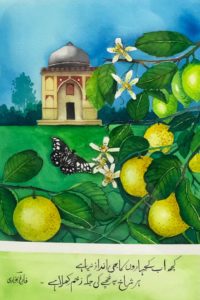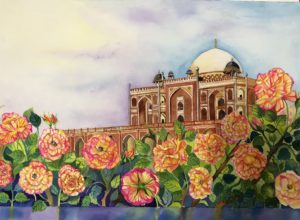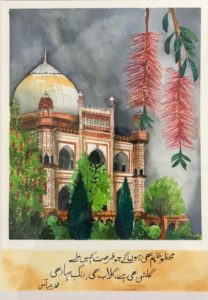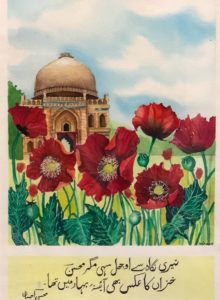Splashing the colours of medieval Delhi’s spring on canvas
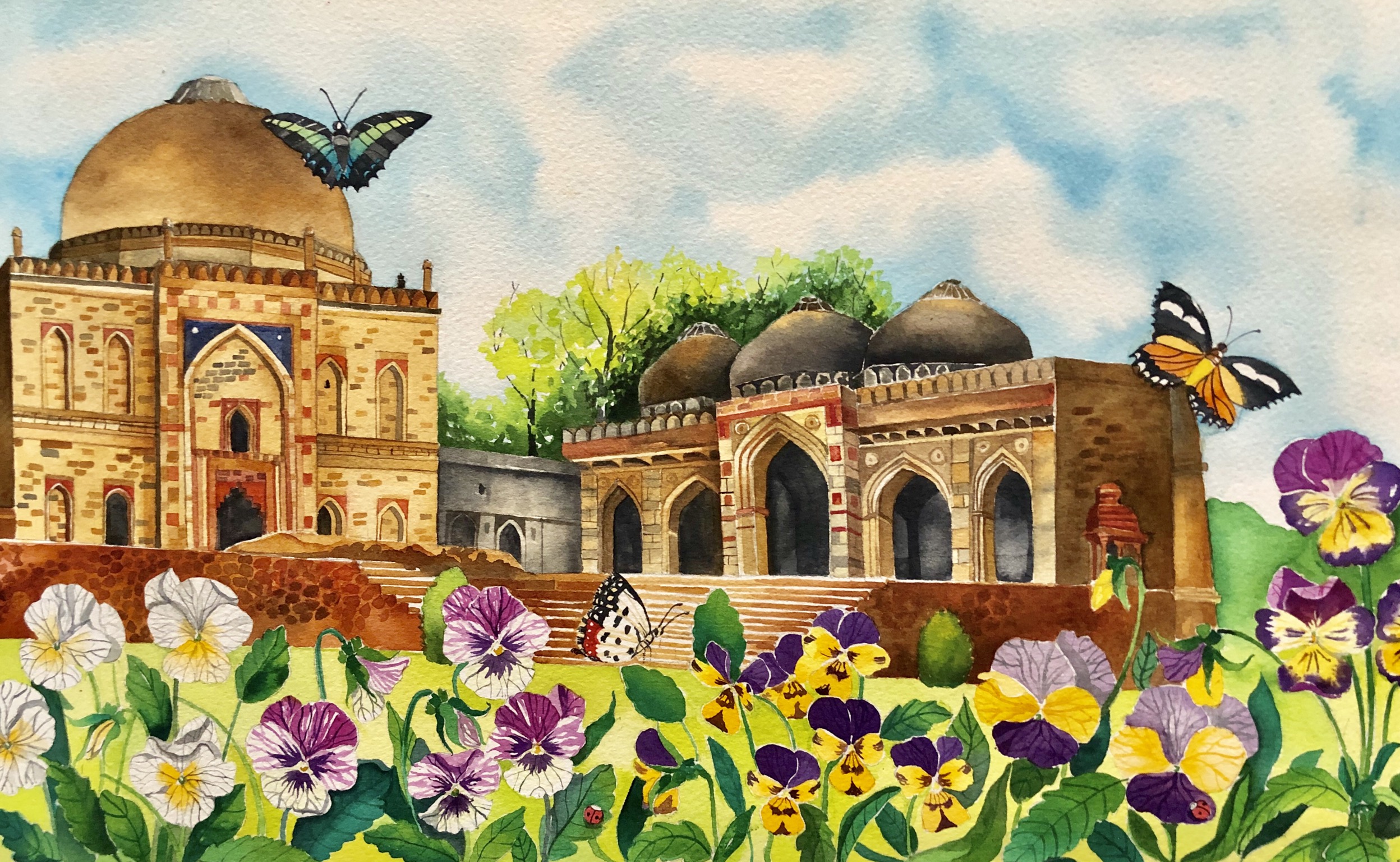
The painting depicts spring in the Lodhi Garden of Delhi. It was accompanied by an Urdu couplet by the famous poet, Mit Taqi Mir
An ongoing art exhibition in Delhi has put on display a collection of paintings recreating the hues of spring in medieval Delhi. The artwork takes one back to the cultural vibrancy of Shahjahanabad, as Delhi was called at that time. The artist is also a doctor in making, specializing in neuroscience.
Be it the architectural marvel of Humayun’s Tomb or the lush green gardens of Lodhi, many heritage sites in Delhi give a glimpse into the late medieval and early Mughal period, an era in which the Indian sub-continent was ruled by Moghals, an Islamic community from central Asia. During this period, the cultural epiphanies of Delhi were at their zeal. Not just tourists, these historic sites have also captured the imagination of many artists, over the years, who have captured them through various mediums- camera, pen, paint, et al.
Dr Bahaar Jain, based in Delhi and working at the National Brain Research Centre, chose paint to showcase on
Titled Bahaar-e-Dilli, the exhibition displays paintings of popular monuments of Delhi in the foreground of flowers
and butterflies.
One of her paintings gives a glimpse of a tomb in the background through the branches that are carrying white flowers and yellow fruits gorgeously, and are hovered over by a grey coloured butterfly donning white dots in beautiful patterns.
While the sky, beautifully blending various shades of blue, is adding to the beauty of the artwork, an Urdu couplet by the famous Indian poet- Faiz Ahmed Faiz, written artistically below the painting, is rendering a touch of antiquity.
The couplet reads Gulon mein rang bhare, baad-e-naubahar chale; chale bhi ao ki gulshan ka karobar chale (Let the bloom fill with colour, let the first zephyr of spring flow; do come over, so the garden can go on with its daily). “I was trying to capture Delhi as Shahjahanabad, as Delhi was called at that time Those days these Mughal gardens were sites for dastangois ( a 13th-century old art of story-telling in Urdu), ghazals ( a form of lyric poetry with a fixed number of verses and repetitions) and other social entertainment. I wanted to include that rich Urdu heritage. They are related to the paintings in the sense that they also talk about the spring and Delhi,” says Dr Jain.
Some of the artworks have been made on old stamp papers. A road sign pole standing pretty along with a tree laden with purple flowers, painted on a 12 annas (an old Indian unit of money) stamp paper, is one of them. The stamps belong to the times of Holkar state and Bombay Presidency ( a former province of British India), thereby, giving the painting an ancient touch.
From inspiration to the canvas
Talking about the inspiration to paint these artworks, Jain says, “Delhi is simply gorgeous during spring. There are so many flowering trees like Silk Cotton and Chinaberry. The winter flowers are still around. The weather is benevolent. Add to that the fact that I am a major Indian history buff. I ended up wondering what the people of those days would do with their afternoons when the time was aplenty and distractions were few. I imagined them visiting these Mughal Gardens for a dastangoi or a just a stroll. So, Bahaar-e-Dilli was born, a re-imagination of what old monuments would have looked like in the spring.”
Jain is strongly influenced and inspired by the famous 18th-century artist Sitaram. “What intrigued me the most is the fact that he worked with watercolours. I feel it is the perfect medium to paint India in because it’s light and vibrant, unlike heavier mediums like oil. Also, Sitaram made his paintings on the spot, but with great attention to detail. Accompanied by books about Sitaram, I visited Fatehpur Sikri ( a small city in Agra District ) and compared the building that he painted to the ones that are still standing,” she says.
Sitaram’s work became a window into the past for the artist and helped her imagine them in their glory days and the glory of spring.
Besides being an ace water-colourist, Jain is also well versed in painting other Indian art forms including Pattachitra, Pichhwai, Madhubani, Worli, and Miniatures. The artist is also fond of contemporary art and craft like stamp making, etc.
Talking about juggling between medicine and art, the artist says, “Medicine is a form of art. It needs spontaneity, creativity and the ability to think out of the box. For me, the study of medicine is a science- but its practice is an art.”
The exhibition will go on till June 30, 2019 in the Delhi ‘o’ Delhi foyer of the Indian Habitat Centre, which is known to organise many art and theatre events from time to time.


